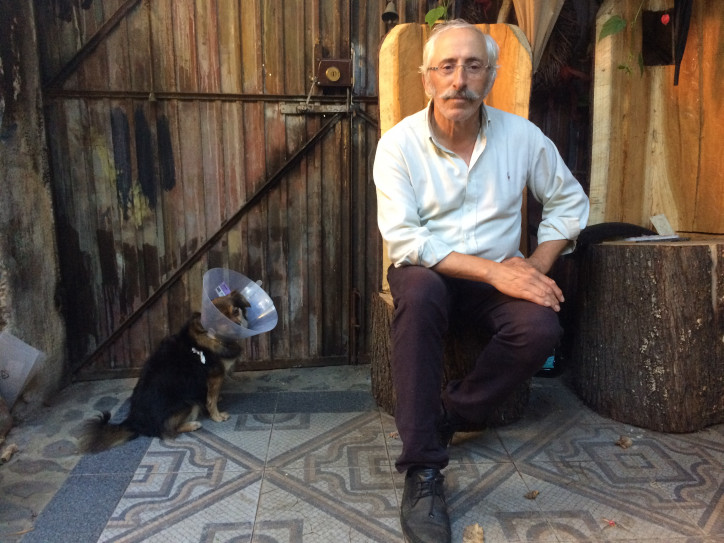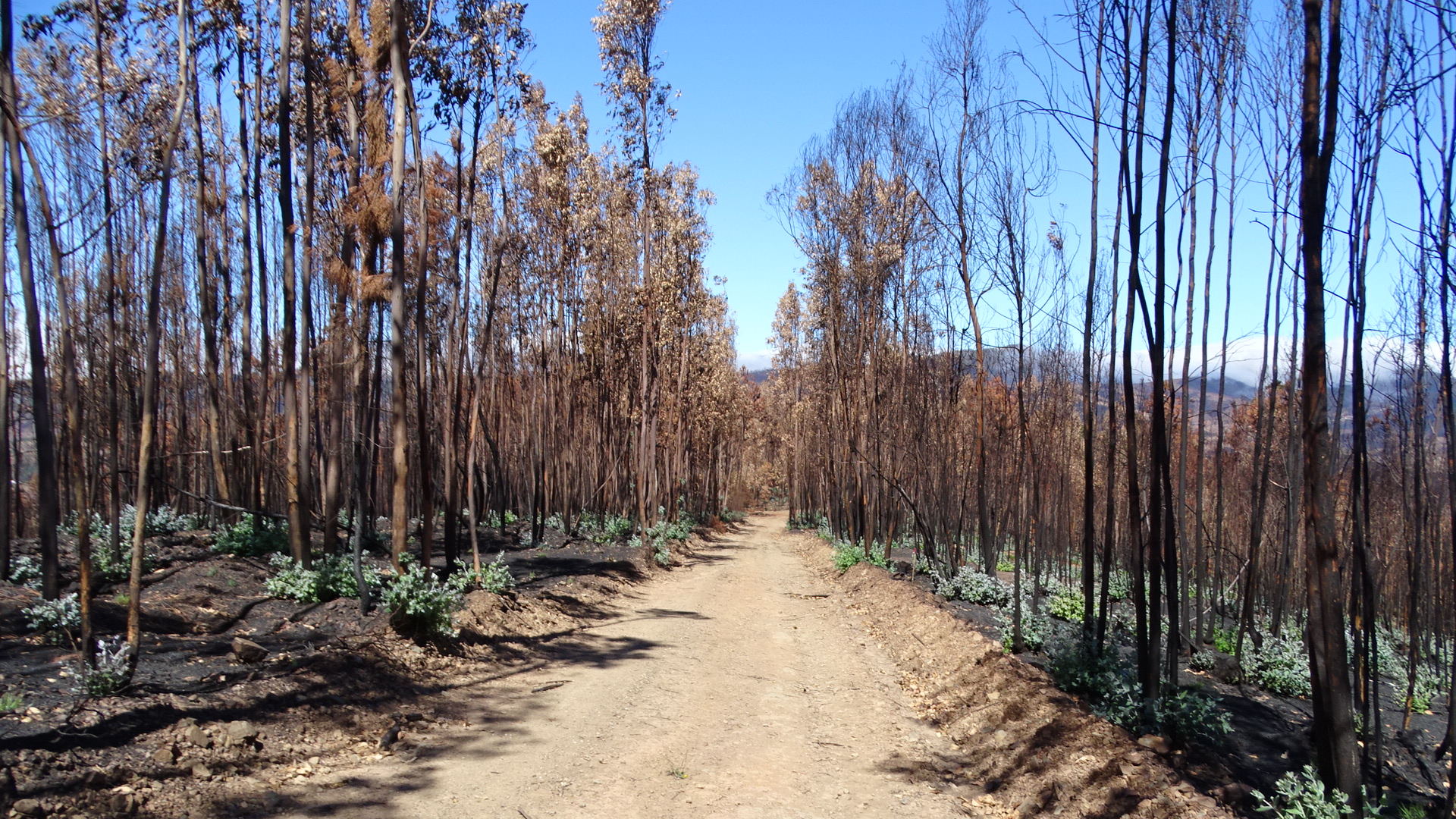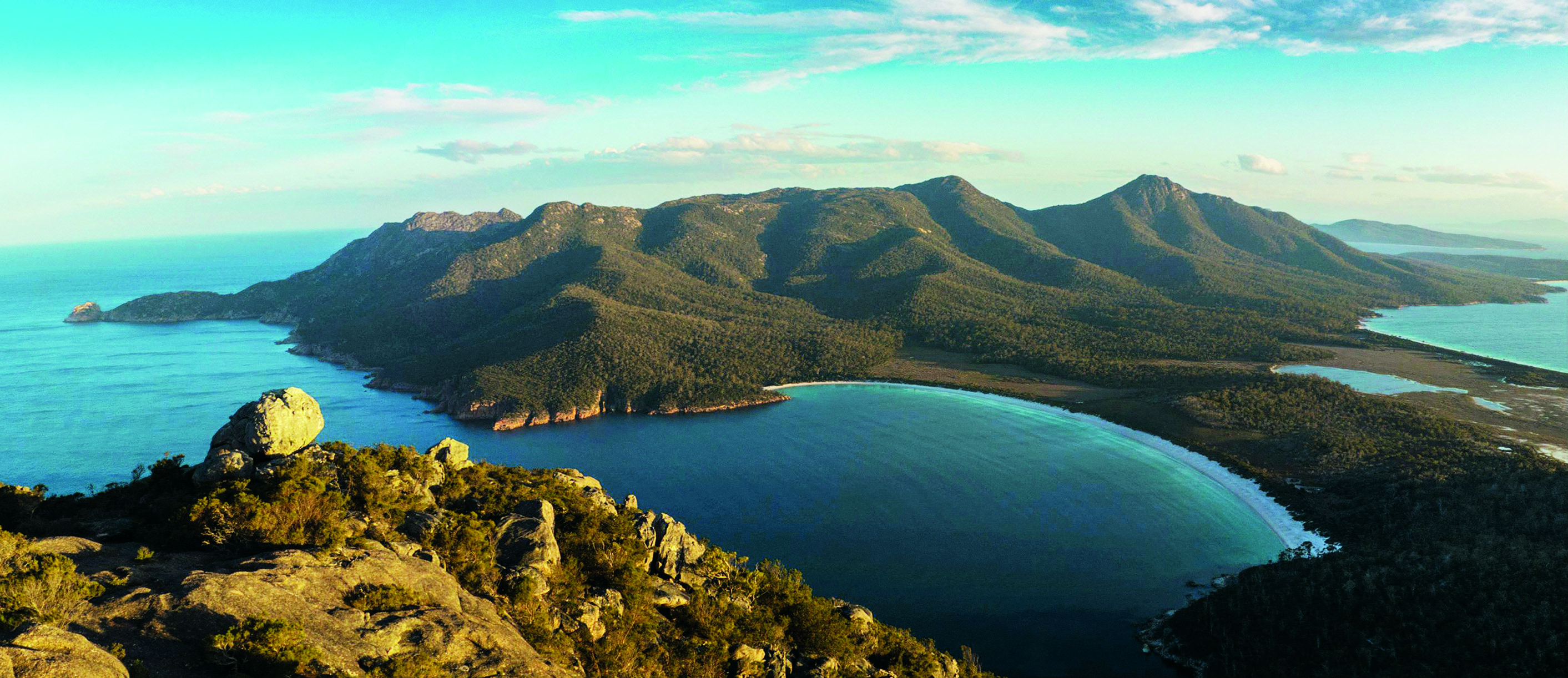
João stops the car and violently uproots a small green tree growing on the roadside. He comes back and stays silent for a few minutes, waiting to calm down. He’d gladly rip out all of them – the thousands of eucalyptus trees that are taking over the hills leading to Nodeirinho.
I meet him for the first time in the municipal garden in Pedrógão Grande. It’s July 2018. Everything is blooming; you can’t tell that more than 12 months have passed since the tragedy. João Viola is 62 years old, wearing a white shirt open at the top. He answers a few phone calls; from time to time, from various parts of the garden, people greet him in Portuguese. We’re sitting on a bench with a view of the entire square. “Here’s the tropical part, over there the Japanese part, a few metres away are the pines, past them the cactus zone, in the middle oaks that have been here for centuries,” he says, pointing out each in turn. He could tell you about each of the more than 300 plant species we see before us. He’s been working here for 20 years, and he doesn’t hide how proud he is.
In the garden in Pedrógão Grande there are no eucalyptus. But every day João passes them twice – on his way to work and on his way home. Several times a week he pulls out one or two trees. He spends his evenings with his wife, Dina, in Nodeirinho. Their neighbours often visit.

When I sit at the table with Dina, a neighbour comes in; she’s just made soup, and asks for a pot so she can leave them some for supper. That’s how it’s always been here, but it used to smell different than in other villages, because the spring in the centre never dried up, and lots of flowers grew around it. A few houses away lived Vasco, a cousin of João, and not far away an English couple, Steve and Susan, who moved in four years ago. When Susan used to look through the window, she could see pines and eucalyptus; in the summer, the birds sang loudly. In the centre of the village stands Maria’s house, right next to the cistern that pulls water up from the spring. It’s cold – João tells me to put my hand in and check. That’s where the ones who survived hid from the fire.
***
“We had learned to live with the eucalyptus; we didn’t know how it would end,” says João, as, on the road from Pedrógão Grande to Nodeirinho, we pass more of the trees. “We use it for sore throats and coughs; it makes you breathe easier; we write on paper from it. When you need to, it also cools your skin.” I read later that the eucalyptus was meant to be an ornamental plant, but later it dried out the soil. In the mid-19th century it was planted close to Aveiro, about 100 kilometres from Pedrógão Grande, but only in the 1970s did eucalyptus plantations start to replace the former olive groves and wineries.
The true eucalyptus revolution came only after the clove revolution. In the 1980s, eucalyptus appeared en masse in Portuguese fields. Maybe the guides will say someday that it was the beginning of a catastrophe.
Before the Portuguese overthrew their rightist dictatorship, for 40 years they lived





